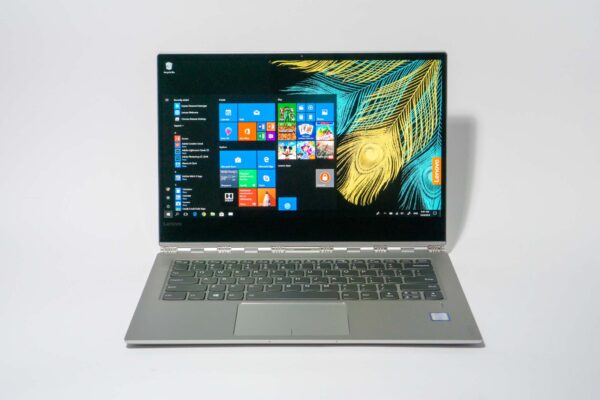
Lenovo’s premium Yoga 920 two-in-one convertible launched late 2017. It’s well-designed, has 8th generation Intel Core processors, modern hardware specifications, and notably fixes the badly positioned webcam in the otherwise very well regarded Yoga 910 from the previous year. Can the Yoga 920 claim to be the ultimate two-in-one convertible device?
Between the ThinkPad brand and those under its own name, Lenovo has an impressive line up of two-in-one convertible devices. The Yoga 900 series is probably the most beautiful. It’s also very recognisable due to its unique iconic watchband-style hinge. The Yoga 920 continues to evolve that very distinguished design.
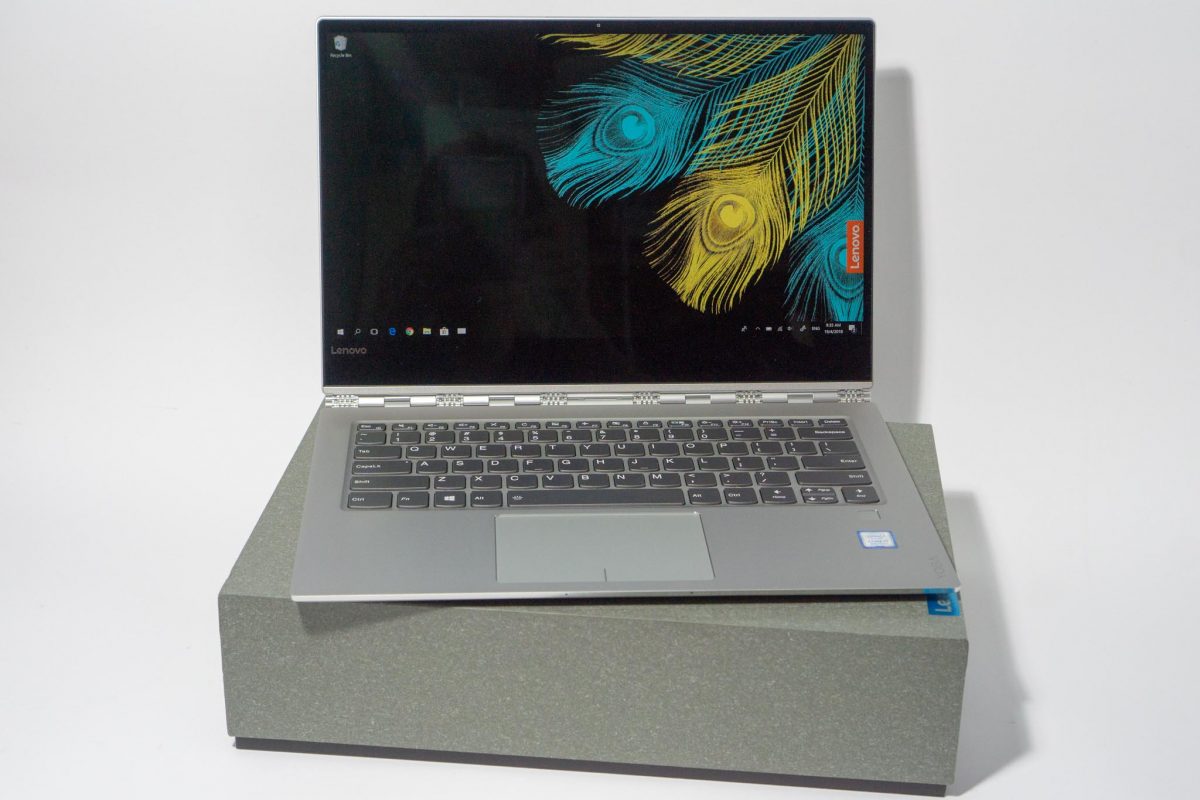
My Yoga 920 review unit came with the highest-end hardware configuration. It has a 4K UHD display, 16 GB of RAM, 1 TB of SSD. The entry-level configuration comes with a Full HD display, 8 GB of RAM, and 256 GB of SSD. All models support a touchscreen display with pen input, as well as Windows Hello fingerprint reader.
The all-aluminium Yoga 920 is very well built. The chassis feels robust and solid. When closed, the cover lines up perfectly with the main body, given the illusion that the entire two-in-one convertible was built from a single block of metal.
The cover is stiff to open, a necessary characteristic if you don’t want the display to wobble around when you touch or use a pen on it. The watchband hinge is strong, and it does an excellent job holding the display steady whichever angle you choose to open the cover to. Go from laptop mode, to tent mode, to stand mode, or to tablet mode, the hinge works great.
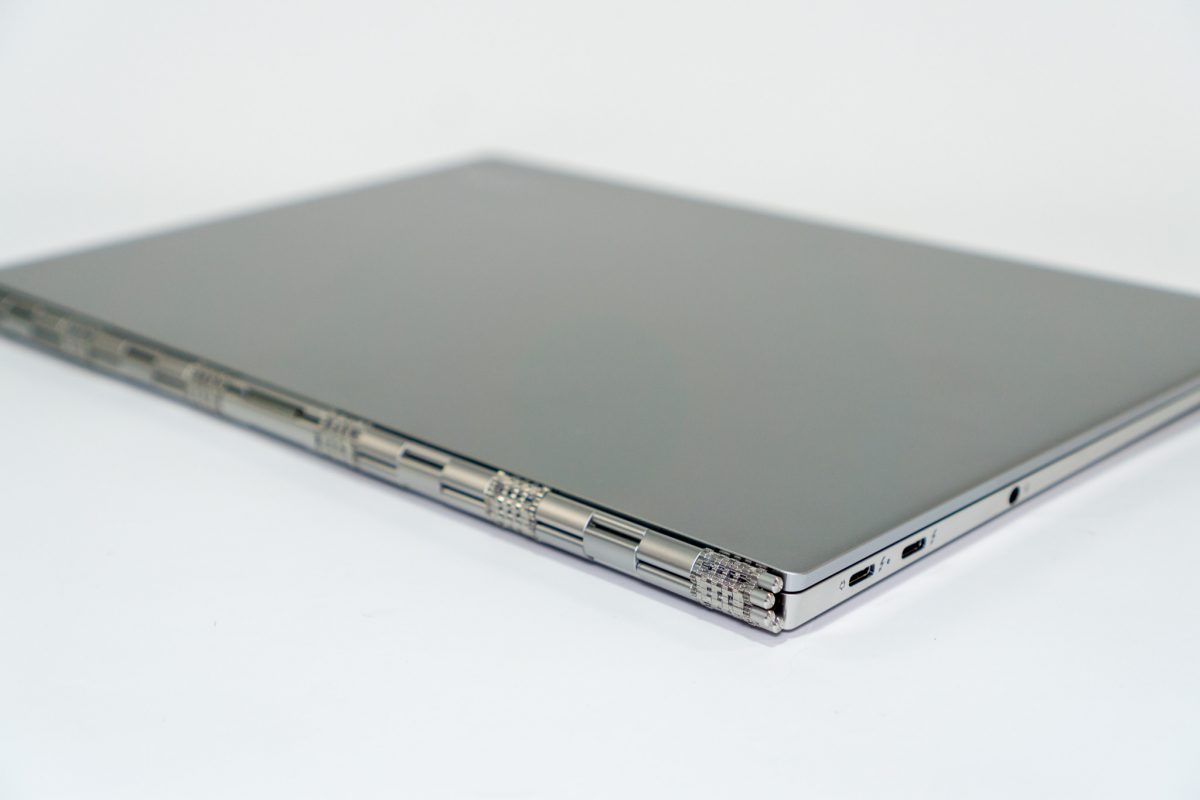
Many people seem to think the watchband-style hinge is beautiful. I agree it’s perfectly functional, sturdy, and does its job very well, but personally, I have a different idea about how beauty should look on a notebook or convertible device. I don’t dislike the look either. I must admit it does add flair and some sophistication to the Yoga 920’s mostly clean and somewhat understated design.
The Yoga 920 measures 323 x 223.5 x 13.95 mm (WxDxH) and weighs 1.37 kg. It’s relatively thin and light. At first glance, it may appear its form factor is slightly large, but don’t forget that it has a display that measures nearly 14-inches diagonally, so you can’t compare the Yoga 920 with devices with 13.3-inch displays. The Yoga 920’s thinness is quite respectable, considering that it is a two-in-one convertible.
The Yoga 920 is light on ports, but unlike some devices that have fully abandoned legacy ports, it still has one USB 3.1 Gen 1 Type-A port retained on the right side of the device. This is an always-on port, so you can use this to charge other devices even when the Yoga 920 is powered off.
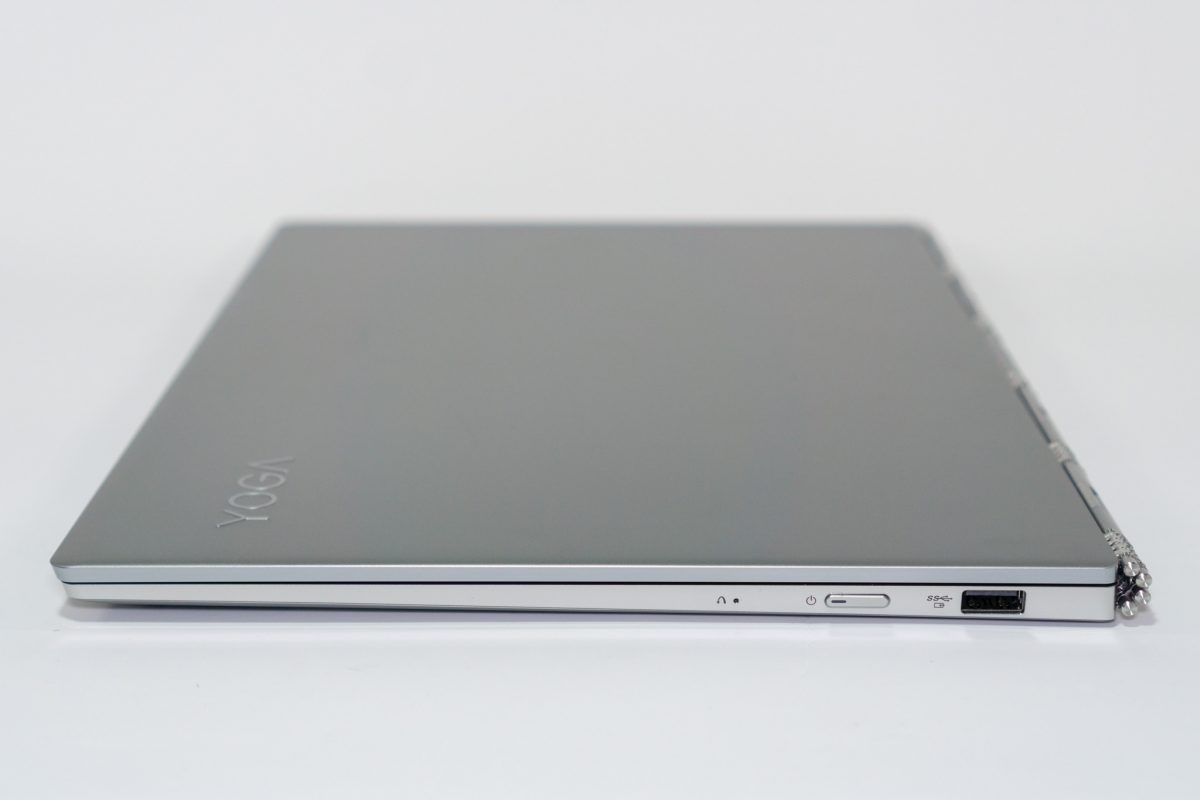
Besides that USB port, there’s a power button and a recessed reset button on the right side.
Along the left side, you get two USB 3.1 Gen 2 Type-C ports, both with Thunderbolt 3, DisplayPort, and Power Delivery. You can charge the Yoga 920 using either of these ports. The Thunderbolt 3 ports have 4 lanes of PCIe, so you can attach an external GPU to the Yoga 920. I do wish to have Type-C ports on both sides of the device so I can have more flexibility in how I run my cables.
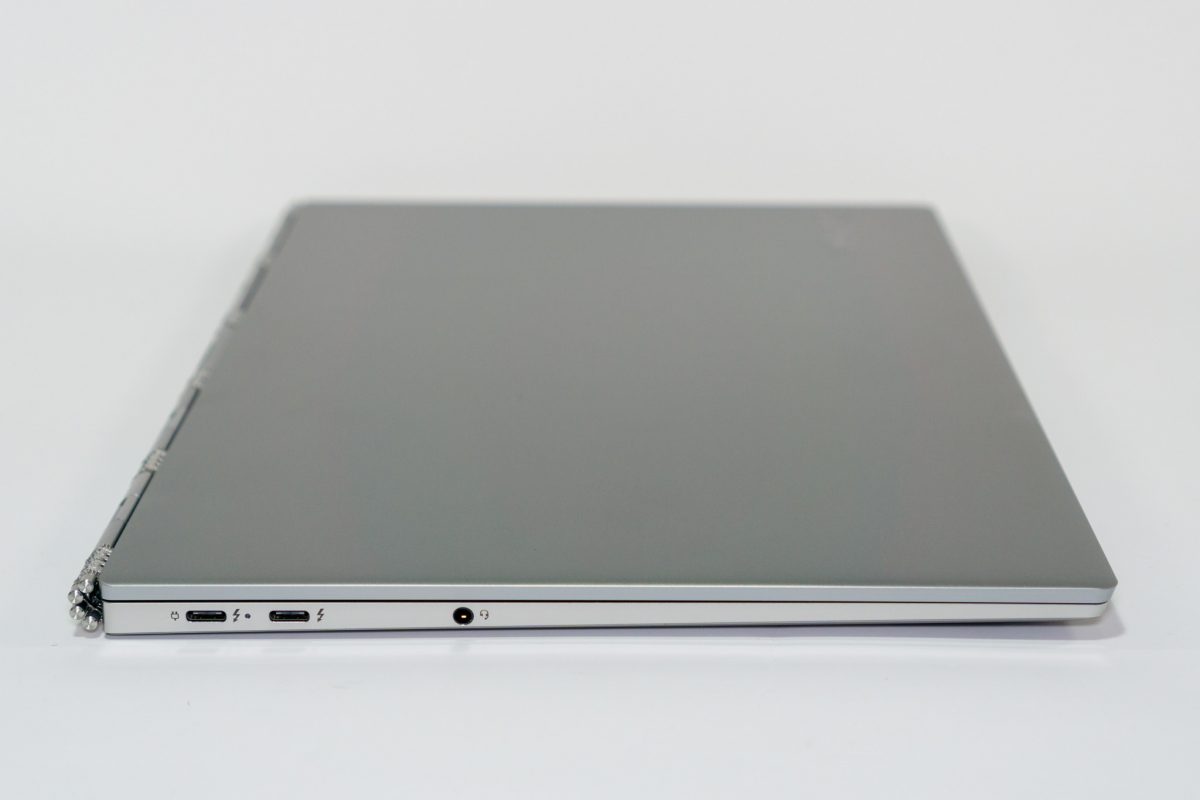
The 3.5 mm audio jack, also on the left side, is the last and final port available on the Yoga 920. Dolby Atmos produces sound that is absolutely immersive and engaging, but it is supported only with a plugged-in headphones, not with the built-in speakers.
The Yoga 920’s two JBL-branded speakers are located on the underside of the device, in the front left and right corners. The speakers sound decent, though not great. The speaker location doesn’t do it any favours when used in standard laptop mode as the sound simply fires down on the surface you’ve set the Yoga 920 on, and you’re at the mercy of whatever material that surface is made of.
The display on the Yoga 920 measures 13.9 inches diagonally, and you can choose between 1080p Full HD resolution or 4K UHD resolution. I personally feel that Full HD is not enough resolution by today’s standards, but 4K isn’t quite necessary just yet, and it will take a hit on battery life. Something in-between would work very nice, like how the 13-inch MacBook Pro does with 2560×1600. Fortunately, the 13.9-inch display gives just a little more real estate to not waste all the 4K pixels, and the Yoga 920’s boasts pretty good battery life anyway.
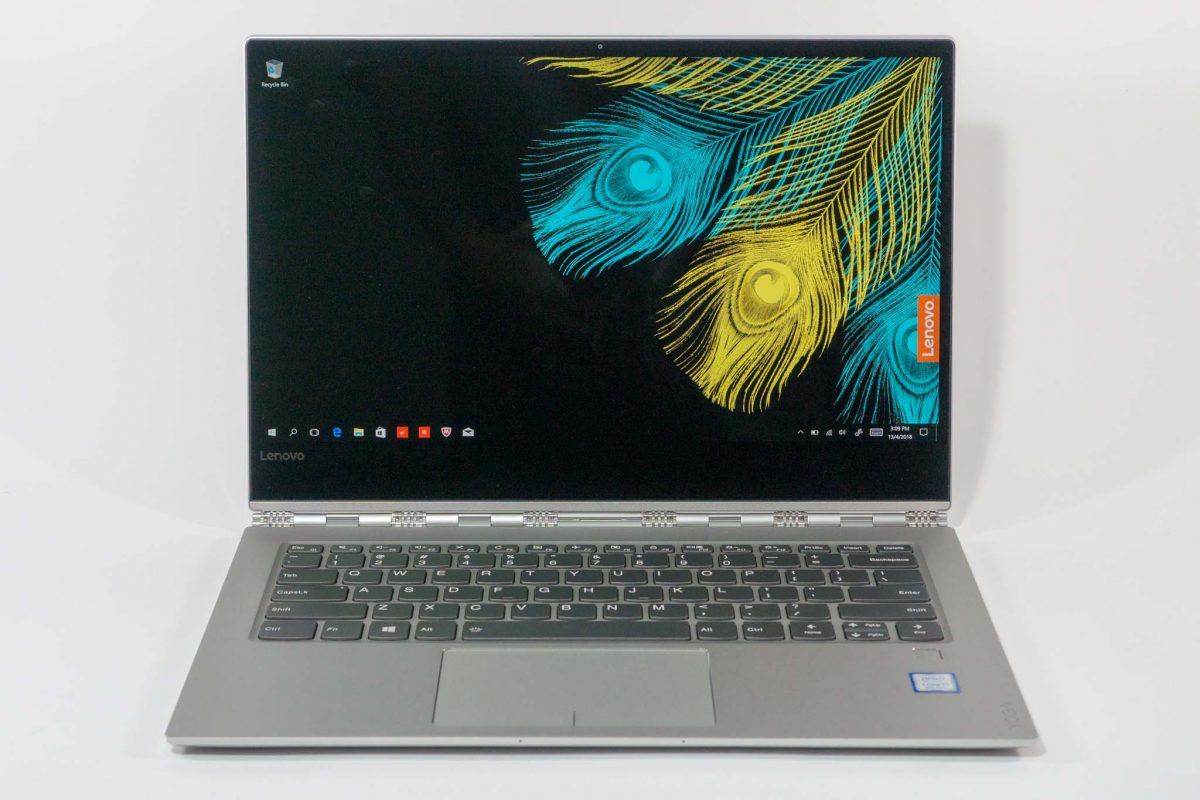
The bezel around the screen is quite small, except at the bottom where it has a ridiculous expanse of about 26 mm. The sides are just 6 mm, and although the top is just 8 mm, Lenovo has managed to put the webcam nicely centred at the top. No more webcam looking up your nose like in its predecessor. The webcam has 720p resolution, and unfortunately it doesn’t do Windows Hello facial recognition.
A big complaint of the Yoga 910’s keyboard was about its undersized right-shift key. The Yoga 920, fortunately, returns to a more conventional keyboard layout. The keys are backlit, so you can work in the dark, and the medium travel keys provide a good typing experience. In tablet mode, the keyboard is an avoidable hindrance. This keyboard doesn’t have the magic disappearing act like that on the ThinkPad Yoga, i.e. recessing into the chassis so the keys don’t poke out.
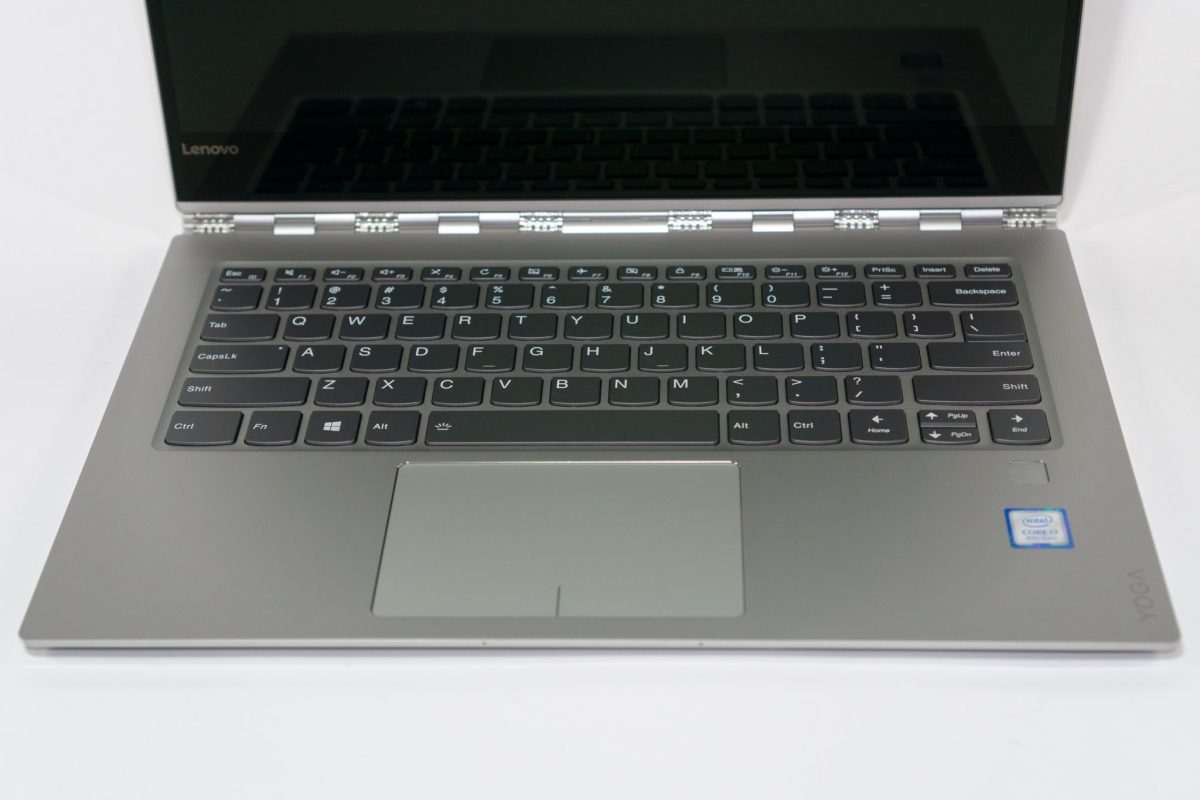
The Windows Precision trackpad on the Yoga 920 works very well. The trackpad is good-sized, measuring about 4.92 inches diagonally, and its glass surface is very smooth. All the Windows 10 gestures are supported very well.
The Windows Hello fingerprint reader is located below the right side of the keyboard. It’s easy to use and locate when the Yoga 920 is used in laptop mode. Some other two-in-one convertibles choose to locate the fingerprint reader on the side, so they are usable in any mode. Unfortunately, those are also difficult to locate in every mode. The fingerprint reader on the Yoga 920 works, though I find it a tad slow. Fortunately, since you likely don’t unlock your computer anywhere as often as your smartphone, this is not a big issue.
Unlike some ThinkPad models, the Yoga 920’s fingerprint reader doesn’t feature on-chip fingerprint matching. This is less secure, but expected since the Yoga 920 isn’t positioned as a business device. Incidentally, there also isn’t a discrete TPM, though with Intel’s Platform Trust Technology, you do get TPM 2.0 support via firmware.
Apart from the 10-point multi-touch which works very well, the Yoga 920’s display also supports pen input. It’s good to know that Lenovo has included the Active Pen 2 in the Yoga 920. The Active Pen 2 is well-made, properly sized, not too heavy, has one button at the top end, and two more buttons on the barrel. The pen supports 4096 level of pressure, but doesn’t support tilt. This is an AES-type pen, and the buttons pair via Bluetooth. There are two types of batteries, 1x AAAA and 2x SR527SW. Both are uncommon enough to be rather troublesome to find when the time comes to replace them.
The Lenovo Active Pen 2 is very pleasant to write with. In fact, this is a really good pen. It’s very smooth, and it glides across the surface of the Yoga 920’s display effortlessly. The experience is almost at the same level as the Surface Pen on the Surface Pro.
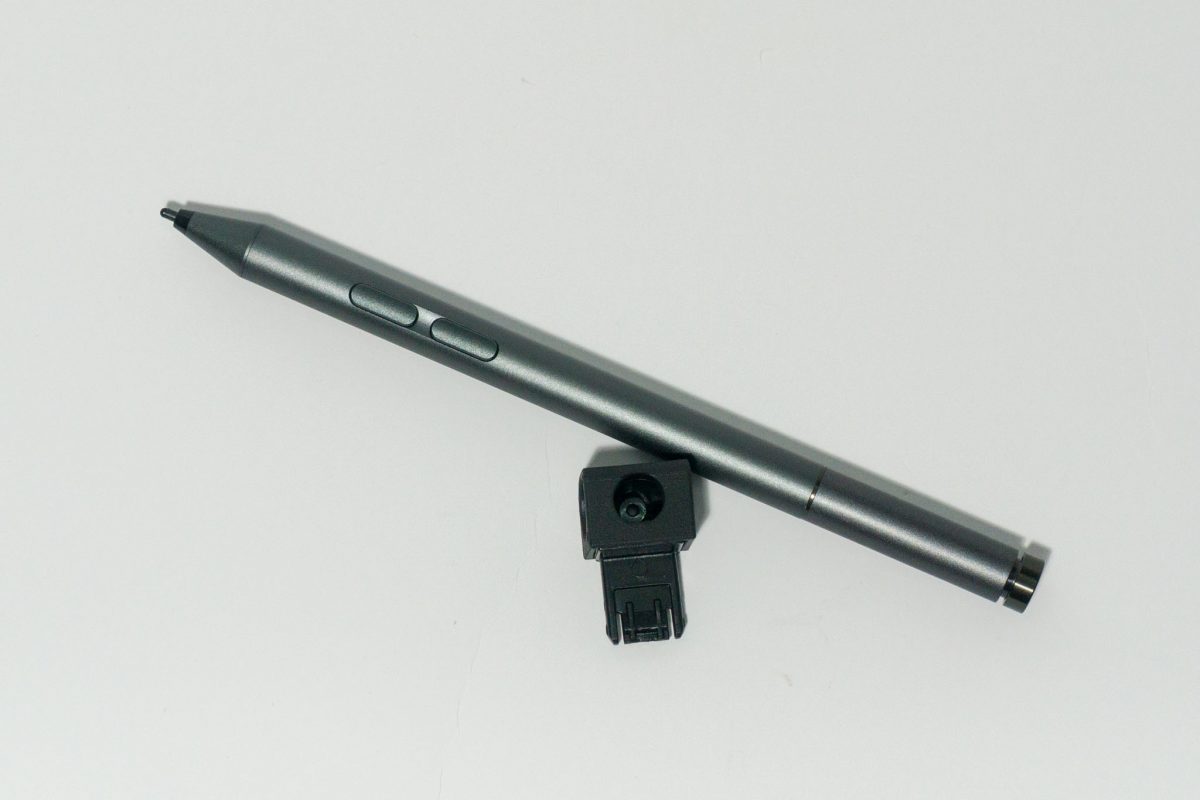
While the Lenovo Active Pen 2 is great, Lenovo provides a rather disappointing plastic pen holder which slots into the USB Type-A port on the right. The pen holder barely works, renders the only USB Type-A port unavailable, and also blocks the power button on the side. I don’t want to talk about the quality of the plastic. The entire Yoga 920 is so well designed and well made, I don’t understand why it seems like there was no effort put into figuring out the pen storage. I’m not asking for the pen to be stowed insidethe chassis itself, but perhaps a way for the pen to attach securely, like how the Surface Pen magnetically attaches to the Surface Pro.
A neat trick the Yoga 920 can boast of is its array of four far-field microphones that enables Cortana to hear you from across the room. Lenovo says this works from up to four metres away. I didn’t test from that far, but from two to three metres away, I managed to get Cortana to hear me okay.
The Yoga 920 is powered by Intel’s 8th generation Core i5-8250U or i7-8550U processors. Compared to their 7th generation counterparts, the new processors double the number of cores to 4, and with hyper-threading, you get a total of 8 threads. The Intel 8th generation processors integrates the Intel UHD 620 graphics, and the Yoga 920 does not offer any dedicated GPU options. If you really need a dedicated GPU, you have options via the Thunderbolt 3 connection.
You can configure the Yoga 920 with 8 GB, 12 GB, or 16 GB of DDR4 RAM. For storage, the Yoga 920 is generously fitted with Samsung’s very excellent, super fast, PM981 NVMe module, and you can choose from 256 GB, 512 GB or 1 TB capacities.
The Yoga 920 supports 802.11. a/b/g/n/ac Wi-Fi (2.4 GHz and 5 GHz), and Bluetooth 4.1.
The 70 Wh battery is rated to run for 15.5 hours with a Full HD model, and 10.8 hours with the UHD model.
In testing my UHD review unit, I can get at least 9 hours of casual use, which for me means email, web-surfing, and writing blog reviews like I’m doing right now, with Wi-Fi turned on and the screen at about 40% brightness. PCMark 8 Home Battery benchmark scored this Yoga 920 at 4:50 hrs, considerably better than the ASUS ZenBook Flip S score of 3:45 hrs, or the Dell XPS 13 score of 4:15 hrs.
Unboxing the Yoga 920 is quite a memorable experience. After taking off the cover of the sturdy well-made box, there is this pair of flaps that, when you open up, lifts another interior box upwards, bringing the contents closer towards you. It’s as if you were unveiling jewellery, and perhaps some people might liken the bling on the watchband hinge to some jewel.
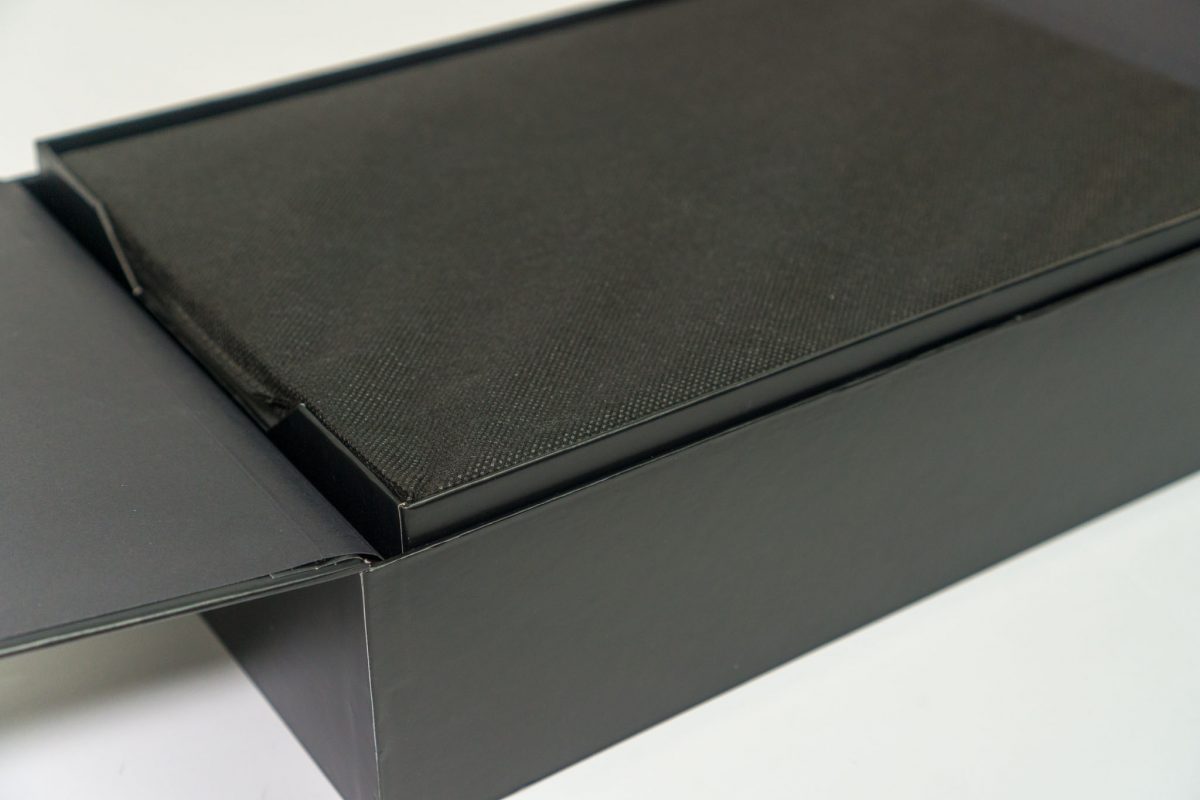
The contents in the box are packed immaculately. The Yoga 920 itself is in a fabric sleeve right at the top, and other accessories and paper documentation are packed in boxes beneath it.
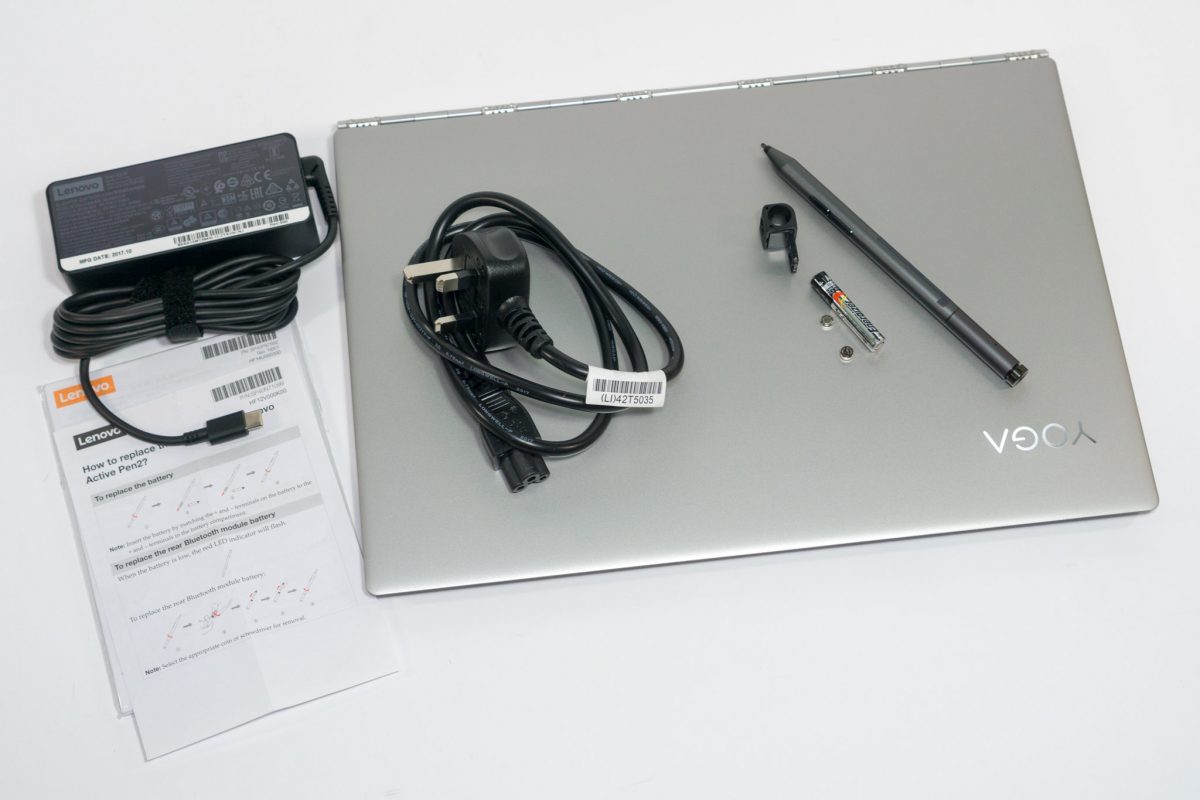
With the kind of attention Lenovo has put into designing the packaging and the unboxing experience, I’m just really puzzled why they didn’t try to do better with the disappointing pen holder.
The Yoga 920 performs well in benchmarks. The 8th generation Intel Core processors are clearly ahead of the 7th generation, particularly in multi-core tests. The Geekbench 4 results below comparing the Yoga 920 with the ThinkPad T470s which has an i7-7660U processor is quite telling.
View Comment Policy